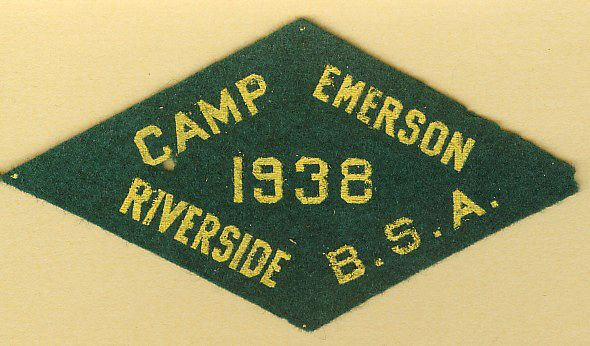Eons ago and up to 1890, the largest Grizzly Bears in the world roamed the San Jacinto and Santa Rosa Mountains. During the late Pleistocene Epoch, Terratornis, with a wingspan of 20 feet and a weight four times that of a Canada Goose, together with its smaller cousins the California Condor and the Turkey Vulture, circled overhead looking for carrion. All of the ancient animals of that era, from insects to Saber-toothed cats and Mastodons, roamed the mountains and the San Jacinto Valley below.
Camp Emerson and Camp Brown are located in Strawberry Valley in the San Jacinto Mountains of Southern California. These camps are in a yellow pine forest biotic community (coulter, Jeffrey, and Ponderosa Pines, Kellogg Black and Canyon Live Oaks and Incense Cedar) in the transition life zone at 5,280 feet, one mile above sea level. Strawberry Valley was named by the settlers because of carpets of Wood Strawberries (Fragaria californica) while are almost all destroyed.
Beginning over 7000 years ago, San Jacinto Valley was lived in by Native Americans. The Cahuilla, Serrano and Luiseno continue to live in the area today. Cahuilla Indian legend says that all natives of North and South America originated from around the base of the San Jacinto and Santa Rosa Mountains and that they traveled counterclockwise and spread from Alaska to Tierra Del Fuego. There are Cahuilla words found widespread in tribes throughout these continents according to Katherine Siva Saubel.
For years, particularly during the warmer months, Cahuilla occupied Strawberry Valley as a seasonal village. They were hunter-gatherers who came up from the surrounding lowlands to escape the summer heat and to obtain food. They hunted game. Acorns, the staple of their diet, were ground into meal. They gathered berries and seeds.
No formal archaeological studies have been conducted on Camp Emerson. However, nine granite bedrock mortars occur on Cahuilla Summit, and one mortar is known on Simonds Flat. A modern mortar was started next to it in 1994. There are eleven more mortars along the north side of Strawberry Creek. Several are found up the west side of Beartrap Creek, as is a sweatlodge lines with flakes from granite boulders for the fire and steam production. This large number of mostly old deep-cut cups in such a concentrated area indicate the prior existence of a forest of oak trees in the valley, and that probably a number of family groups used the area for a very long time. An extended family, in a social group, would own a group of oaks, would harvest the acorns, and would grind them into meal, using rock pestles and manos which have been found in the area.
(illus. 1 & 2)
The mortars on Cahuilla Summit, as well as a rock shelter and sweatlodge, were used in Tribe of Tahquitz and in OA ceremonies. No native living house (kish) exists but Scouts build them for the Indian Lore Merit Badge and for OA ceremonies. No acord storage granaries, pottery chards, arrow points, or remains of cooking fires have been found.
No rock-art sites of carved petroglyphs or painted pictographs occur in Camp Emerson. The painting of the City of Riverside Raincross logo (without the bell), facing south in the Firestone Campsite area, is modern and undated. The Cahuilla did not sacrifice humans on that rock as camp lore had it. A pictograph does occur nearby at the Idyllwild County Park, and another is located in Fern Valley. In Camp Emerson on the north side of Strawberry Creek on its eastern boundary is a rock shelter with a fireplace and chimney coated by centuries of soot.
“The Cahuilla held many places sacred, especially mountains (sic) tops or high rock outcroppings. San Jacinto Peak, Tahquitz Peak, and Lily Rock (Tahquitz Rock) in the San Jacintos, and Toro Peak and Santa Rosa Mountain in the Santa Rosas are examples. These high points were believed to be places where sacred beings dwelled, or touched down when they visited the earth. Tahquitz Peak in particular and the high San Jacintos in general were believed to be the dwelling place of Tahquitz, various spelled Tauquish, Ta co wits, or Taqwis, the much feared supernatural being, associated with meteors, earthquakes, thunder and lightning, and other natural phenomenon. He was thought to possess demonic power, and could bring harm to people who ventured too close to his mountain stronghold. Tahquitz was feared because he not only could kill people, but also could destroy their spirits. Legends of Tahquitz’s evil deeds abound, not only among the Cahuilla, but among native people throughout Southern California.”
THE SAN JACINTOS, 1993.
Kathryn Siva Saubel said that many Cahuilla believe that spirits visit the mountain. Daniel McCarthy, USFS Archaeologist, who surveyed and recorded the Indian sites on Camp Emerson and Camp Brown talked with people who had seen Tahquitz.
The Legend of Tahquitz, was remembered by Jim Fairchild (Eagle Scout T-13, SM T-13 & T-14, Riverside, Silver Beaver 1964) as it was first told by Dr. Paul Simonds (SM T-13, Riverside) at Camp Emerson in the 1920’s. As a tradition, it was told weekly by a senior Scout or Scouters at one of the nightly campfires in Tahquitz Bowl or in Beartrap Bowl.
